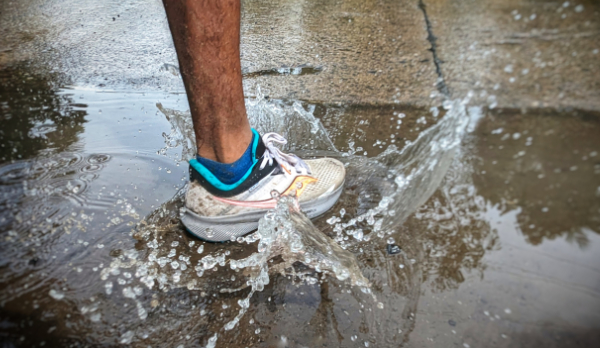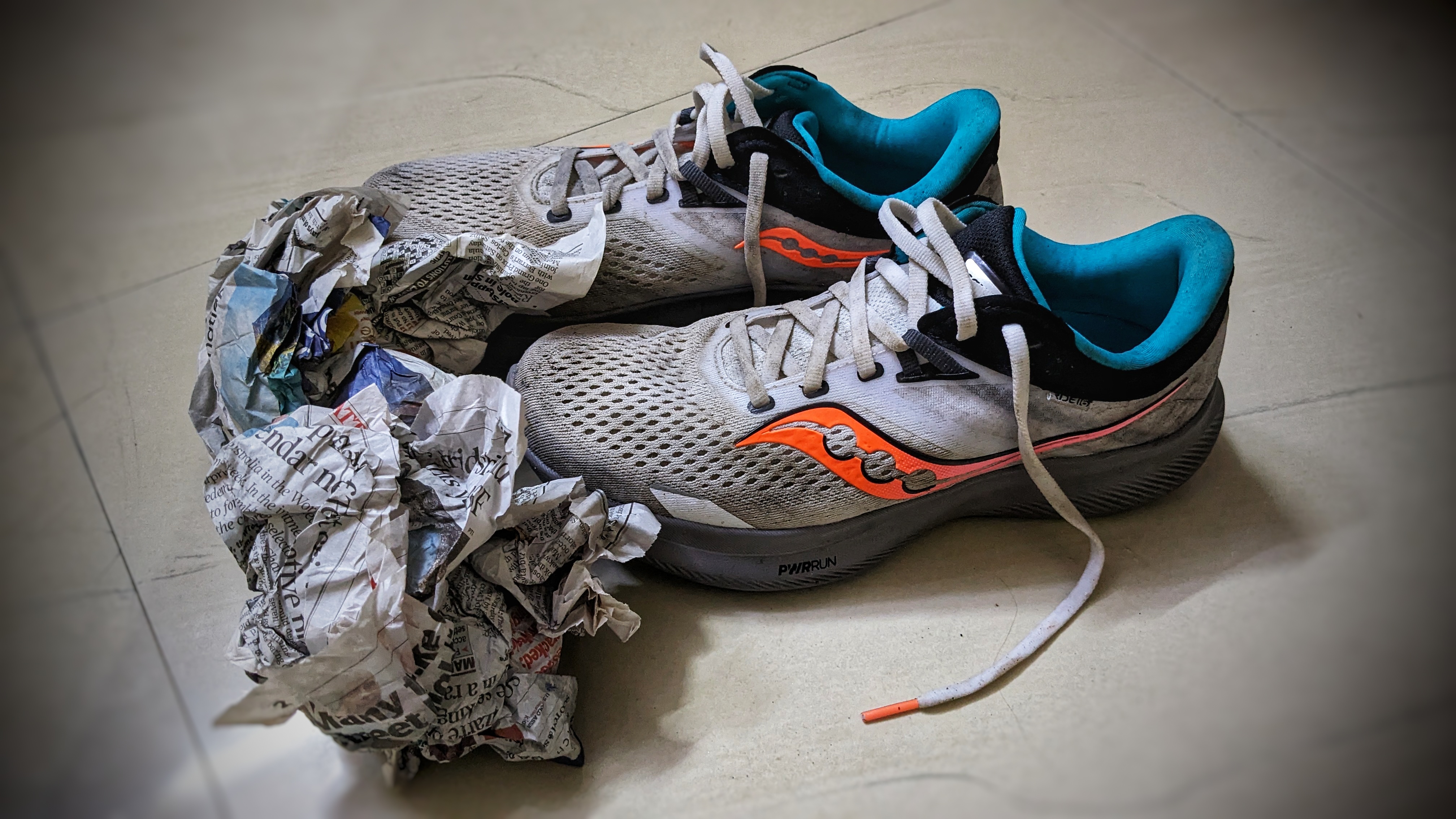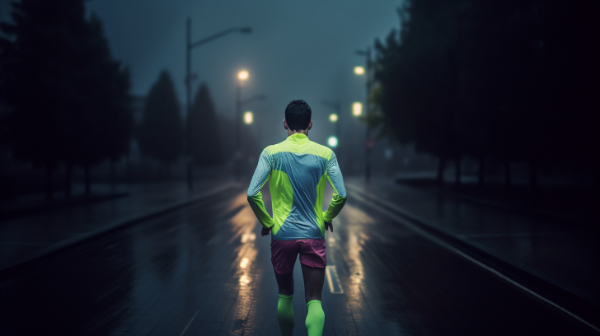
Monsoon is undoubtedly the most anticipated season in India. The season, which in most of the places across India hovers between June to September, is a wanderer’s paradise, with mist covering the ghats as it transforms the landscape, painting it in vibrant hues of green, and creating a picturesque backdrop for nature enthusiasts. However, one group of individuals particularly anticipate this season with excitement and enthusiasm are us the runners. Relatively cooler temperatures during the rains make running more enjoyable, providing a respite from the challenging conditions of the summer. Take Mumbai for example, where the summer temperatures often average around 35 degrees Celsius, monsoon brings the temperature down below 30 degrees.
There’s a kid in everyone who wants to step out of the house and get drenched in the first showers. Running in the rain has a calming and therapeutic effect on the mind, alleviating stress and improving mood. That said, the monsoons come with its own set of challenges for runners, for a number of reasons, here are a few.
With the dos and don’ts of monsoon running, runners can fully embrace the beauty of running in the rain while prioritizing safety and well-being.
Watchout for weather predictions and be dynamic with your plans. The Indian Meteorological Department issues alerts categorized as red, orange, and yellow, indicating the intensity of the predicted weather conditions, with red being the most severe level of warning. On days with a red alert, it is advisable to either skip your outdoor run or limit it to your local area, avoiding travel to run. Instead, you could opt for indoor activities like strength training or running on a treadmill. If you choose to venture outside, it’s best to stick to routes near your home to minimize any potential issues related to transportation. Additionally, consider adjusting the intensity of your workout to make it easier. Remember, rescheduling or skipping a workout from your training schedule will not significantly impact your overall training progress.

Urban roads and monsoon just don’t go hand in hand. The monsoon rains often create potholes and uneven surfaces, particularly on asphalt roads. Cities like Mumbai and Bangalore are notorious for their deteriorating road conditions during this season, making them particularly treacherous for runners. Landing on such an uneven surface or pothole can risk you a fall and/or injury often related to ankle twist, and I have been a victim myself back in 2020. Adjust your running technique to shorter strides and maintain a slightly slower pace to improve stability on wet surfaces. Generally the state highways and the national highways in India are better in terms of road quality as compared to the urban roads but be mindful when running on highways.
Having the right shoes with good traction is vital during the season. One should look for shoes that have good rubber cover underneath, what we call the outsole. This will prevent slips and falls, ensuring a stable and secured one. Be also cautious with tempo-focused or race day shoes as they generally don’t have adequate rubber coverage. Generally, the neutral daily trainers offer some excellent outsole protection. The Pegasus series from Nike, Ghost series from Brooks and the Velocity Nitro series from Puma are some excellent choices here.
Shoes with Gore-Tex uppers are designed to keep your feet dry and comfortable in wet and cold weather. Gore-Tex is a waterproof and breathable membrane that is bonded to the inside of the shoe’s upper. This allows water vapor to escape from your feet, while keeping water from the outside from getting in. Check out the hybrid road-trail-running models, which specially made for slippery surfaces and rain, while can also be used on roads.
Here are a few Gore-Tex running shoes that are available in India.
If your shoes are wet after a run, make sure you dry them up for the next run. This will be complicated for runners with one shoe but drying up shoes in a day is possible. After your run, place some newspapers inside the shoes to absorb excess moisture, and store them in a warm, well-ventilated area. This method allows for sufficient drying time, ensuring your shoes are ready for your next run. They might also get dirty after the run. Using jet spray would come to rescue here, in removing the stubborn stains. However, to simplify matters even further, it is advisable to consider having an additional pair of shoes specifically designated for monsoon running. This way, you can alternate between them, eliminating the need to worry about drying your shoes after every run.

After a rainy run, it is not uncommon for the legs to appear white or pruned due to prolonged exposure to water. This condition, known as “trench foot” or “waterlogged skin,” can be uncomfortable. Thoroughly dry your legs and apply a moisturizer. In case you are travelling to a far off place to run or to race, consider carrying an alternate pair of footwears, preferably floaters or sandals, to allow your foot to dry naturally.
When running in the rain, it is important to wear clothes that will keep you dry and comfortable. Choose a t-shirt that is made of a moisture-wicking material, such as blends of polyester or nylon. Avoid cotton t-shirts, as they will absorb water and make you feel cold and clammy. Also, choose shorts that are made of a water-resistant material, such as nylon or polyester.
Wearing a cap has become somewhat of a trademark for me, and honestly that had nothing to do with monsoon. I initially started putting on a cap to prevent my hair from looking unkempt in race day photographs (yes, for real). However, this habit quickly became ingrained, and now I wear a cap primarily to safeguard my eyes from the discomfort of sweat trickling down my face. This has come to my rescue during monsoon as well. Putting on a cap or a visor during your monsoon runs can shield your face and eyes from raindrops, preventing discomfort and allowing better visibility. It also helps keep your head relatively dry. Further, I prefer caps with reflectors, ensuring an extra level of safety and awareness while running during low-light conditions.
It’s essential to prioritize visibility to ensure your safety, and this is one top which should be considered seriously regardless of the season one is training. Choose bright-coloured or reflective clothing that stands out against the gray backdrop of rain. Neon colors like fluorescent yellow, orange, or green are excellent choices. Vibrant colours like these help motorists pedestrians to spot you more easily, and this becomes really necessary with the reduced visibility during rains.

I generally don’t take my mobile on a run during rains, which is in contrast to other seasons. I prefer to carry mobile phones during my runs primarily as a safety measure, but also to take some interesting pictures (why not, right?). Fortunately, I have the luxury of keeping my mobile safe at home since I own a GPS watch. However, if you rely on your phone to track your runs, using a waterproof pouch or a plastic bag can be a lifesaver to protect your device from water damage. Remember to dispose of plastic bags responsibly to minimize any negative impact on the environment.
In all my six years of running in the Mumbai rains, I have never once attempted to zip a jacket over my regular t-shirt. Firstly, they offer little protection against the constant downpour, leaving you far from dry. Secondly, if it happens to stop raining, wearing a jacket can cause discomfort by making you feel excessively warm. Moreover, this is an opportunity to fully embrace the weather and enjoy the experience of getting drenched.
While the monsoon season brings its own set of challenges and considerations for runners, it also offers a refreshing and invigorating experience. By taking necessary precautions such as avoiding heavy thunderstorms, navigating around potholes, and wearing appropriate gear, runners can make the most of their monsoon runs while prioritizing safety. So, lace up your shoes, embrace the season, and embark on a memorable journey that celebrates both your love for running and the enchantment of the monsoon.

Karthik is a business analyst by profession and a long-time volunteer contributor to Wikipedia. Apart from his enthusiasm for running and photography, advancements in mobile & wearables technology are of utmost interest to him. He is co-founder of Mumbai-based Tilaknagar Running Club.
Do you have a monsoon tip or hack to share? Tweet it to us at @geeksonfeet. And if you’ve enjoyed reading this article and reached this point, do consider subscribing to our weekly newsletter (https://geeksonfeet.com/newsletter). By subscribing, you’ll gain access to a miles of valuable information, including tips, workout ideas, shoe recommendations, upcoming races, and the-everything from the world of running.